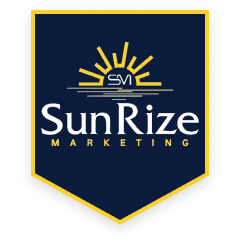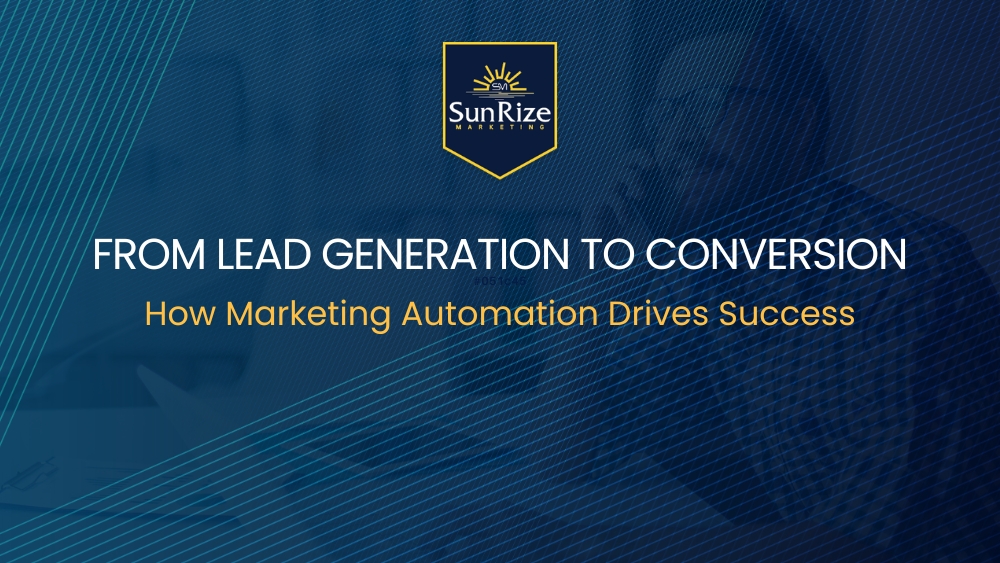Introduction: The Power of Marketing Automation
In today’s fast-paced digital world, businesses are constantly challenged to attract, nurture, and convert leads into loyal customers—all while scaling their operations efficiently. This is where marketing automation comes in. By streamlining repetitive tasks and delivering personalized communication at key customer journey stages, marketing automation helps businesses engage more meaningfully and increase conversion rates.
From lead generation to post-conversion follow-ups, automation empowers businesses to optimize their marketing efforts and focus on strategic growth. In this article, we’ll dive into how marketing automation works across different stages of the customer journey and how it can drive customer success.
1. Streamlining Lead Generation with Automation
Personalized Lead Capture: Marketing automation enables businesses to capture leads in a dynamic, personalized way. Using tailored landing pages, forms, and calls to action (CTAs) based on user behavior, businesses can improve lead quality and conversion rates. For example, if a visitor downloads a specific eBook on SEO strategies, they can automatically be placed into a workflow tailored to that interest. This ensures that the prospect receives more relevant content going forward, which increases the likelihood of them staying engaged.
As HubSpot notes, companies that automate lead management processes see a “10% or greater increase in revenue within 6-9 months.” Automation optimizes lead capture by instantly segmenting users based on initial interactions, leading to more targeted follow-up.
Targeted Content Distribution: Beyond just capturing leads, marketing automation also ensures that businesses deliver the right content to the right audience at the right time. By leveraging automation platforms, companies can schedule blog posts, email campaigns, and social media updates for specific segments of their audience. For instance, a company might automatically send out industry-specific newsletters to subscribers who have shown interest in particular topics.
This targeted approach allows businesses to maintain continuous engagement without the need for manual intervention. According to Marketo, “78% of successful marketers say marketing automation is the key to improving revenue.”
2. Efficient Lead Nurturing: Building Relationships at Scale
Email Automation for Nurturing: As Salesforce reports, “Companies using marketing automation to nurture leads see a 451% increase in qualified leads.” Once leads are captured, the next challenge is nurturing them through the sales funnel. Automated email drip campaigns are a highly effective way to stay engaged with leads over time. These campaigns deliver a series of emails designed to educate, inform, and guide leads closer to making a purchase decision. For example, after downloading a product brochure, a lead could receive a follow-up email with case studies, customer testimonials, and relevant industry insights over the course of several weeks.
Behavioral Triggers: Automation tools can trigger personalized emails or messages based on specific user actions, like visiting a product page or abandoning a shopping cart. For instance, if a lead visits a pricing page but doesn’t complete a purchase, the automation system can immediately send a follow-up email offering more information or a limited-time discount. This kind of real-time engagement helps keep leads warm and provides them with timely, relevant information, significantly increasing the likelihood of conversion.
3. Lead Scoring: Focusing on High-Value Prospects
How Lead Scoring Works: Not all leads are created equal; lead scoring helps businesses prioritize the most valuable prospects. With lead scoring, each lead is assigned a numerical value based on their behavior and interaction with your brand. For example, downloading multiple eBooks, attending webinars, or visiting product pages can increase a lead’s score, signaling that they are more ready to engage with your sales team.
Automated lead scoring ensures that the sales team can focus on leads most likely to convert, while marketing teams continue nurturing those still early in the buyer’s journey. Gartner notes that “companies using automated lead scoring see an increase of 10% in the conversion of sales-ready leads.”
Benefits of Lead Scoring: A well-implemented lead scoring system allows businesses to allocate their resources more efficiently. For instance, a prospect who has attended multiple webinars and downloaded several case studies might receive a high lead score, prompting an immediate follow-up from the sales team. This ensures sales efforts are focused on leads with the highest conversion potential.
4. Conversion: Turning Nurtured Leads into Customers
Automated Sales Funnel Management: Marketing automation integrates seamlessly with customer relationship management (CRM) systems, ensuring that leads move through the funnel without friction. As leads engage with content or show interest in specific offers, they can be passed from marketing to sales with the appropriate context and insights, enabling more personalized follow-ups.
For example, a CRM might automatically notify a sales representative when a lead reaches a specific score or engages with a high-priority action, such as downloading a pricing sheet. This real-time collaboration between marketing and sales teams ensures no opportunity is missed.
Retargeting Campaigns: Retargeting is one of the most effective ways to convert leads who have shown interest but haven’t yet made a purchase. According to WordStream, “Retargeting campaigns can lead to a 70% higher chance of conversion compared to cold outreach.” Using tracking pixels, businesses can automatically deliver personalized ads to users who have visited the website or engaged with content but haven’t converted. For instance, a potential customer who views a product page but doesn’t complete the transaction might later see an ad with a special discount, encouraging them to finalize their purchase.
5. Post-Conversion Automation: Enhancing Customer Loyalty
Onboarding Automation: Marketing automation continues adding value even after the conversion by guiding new customers through onboarding. Automatically sending welcome emails, product tutorials, or scheduling follow-up consultations helps ensure that customers have a smooth and positive experience with your business from the start. Effective onboarding reduces churn and fosters long-term satisfaction.
Cross-Selling and Upselling: Automation tools can also drive cross-sell and upsell opportunities. By analyzing previous purchases and user behavior, marketing automation systems can identify complementary products or services to offer. For example, if a customer buys a software subscription, the system might automatically recommend an add-on service that enhances the product experience. This personalized approach increases customer lifetime value while enhancing the overall customer experience.
Loyalty and Re-Engagement: Post-conversion automation doesn’t end with upselling. Re-engagement campaigns can help retain customers and reignite interest. For instance, if a customer hasn’t interacted with your brand for several months, the system might trigger an automated email offering a discount or access to exclusive content. Maintaining this connection ensures that customers remain engaged with your brand over time.
Conclusion: Automation as a Growth Engine
Marketing automation offers a comprehensive solution to enhance the customer journey, from lead generation through to post-conversion engagement. By streamlining processes, improving personalization, and ensuring timely follow-ups, businesses can guide prospects through the funnel with greater efficiency and ultimately convert them into loyal customers. Automation is not just a tool for scaling marketing efforts—it’s an essential driver of long-term business success.


